Pour-over coffee has taken the specialty world by storm in the last few years. And yes, pour-overs are undoubtedly delicious.
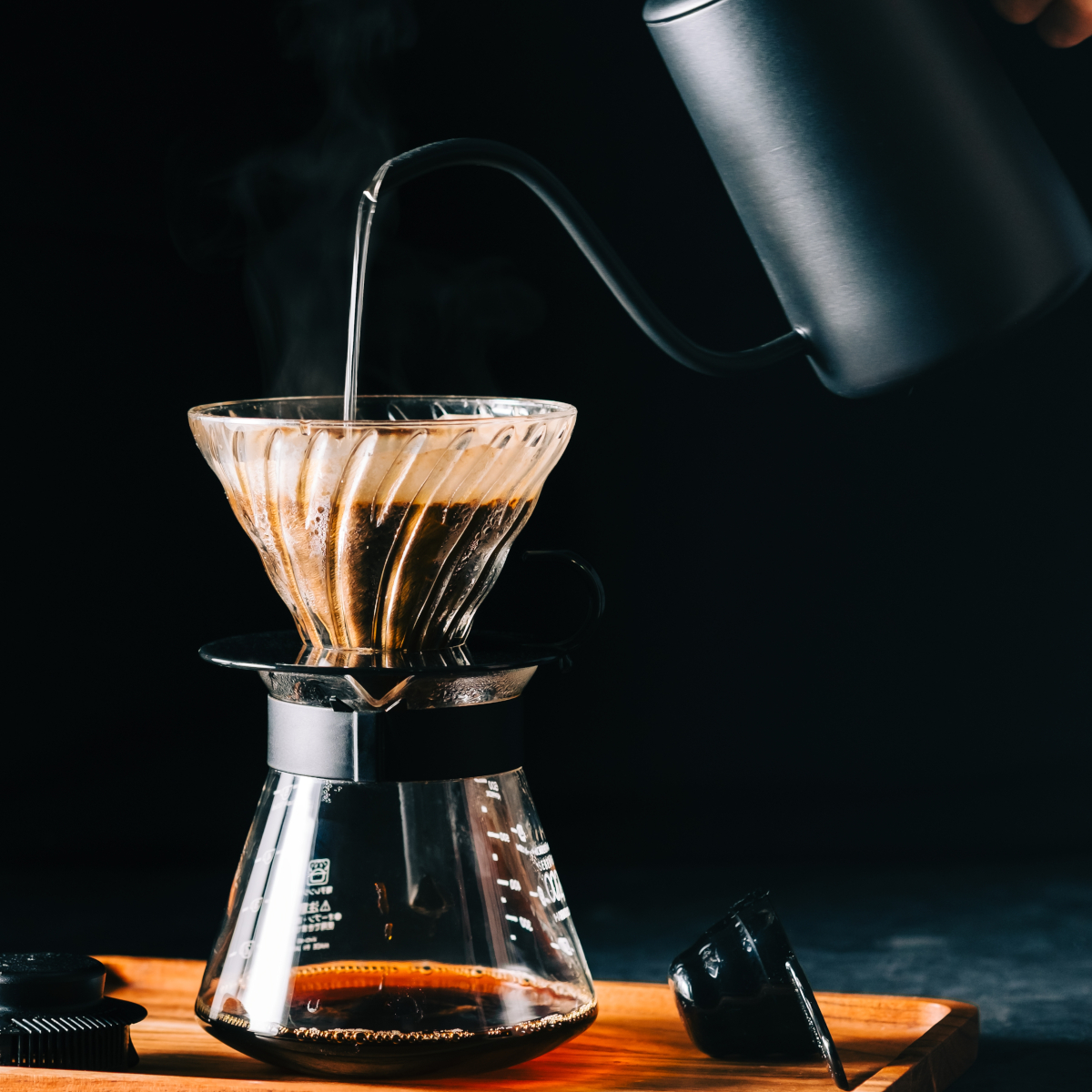
But what about a French press? Is that the same thing as a pour-over brewer?
The main difference between a French press and a pour-over is that in a French press, you steep coffee grounds in hot water for multiple minutes, while in a pour-over, water passes through the coffee grounds quickly.
But that’s just scratching at the surface.
Table of Contents
What Is A French Press?
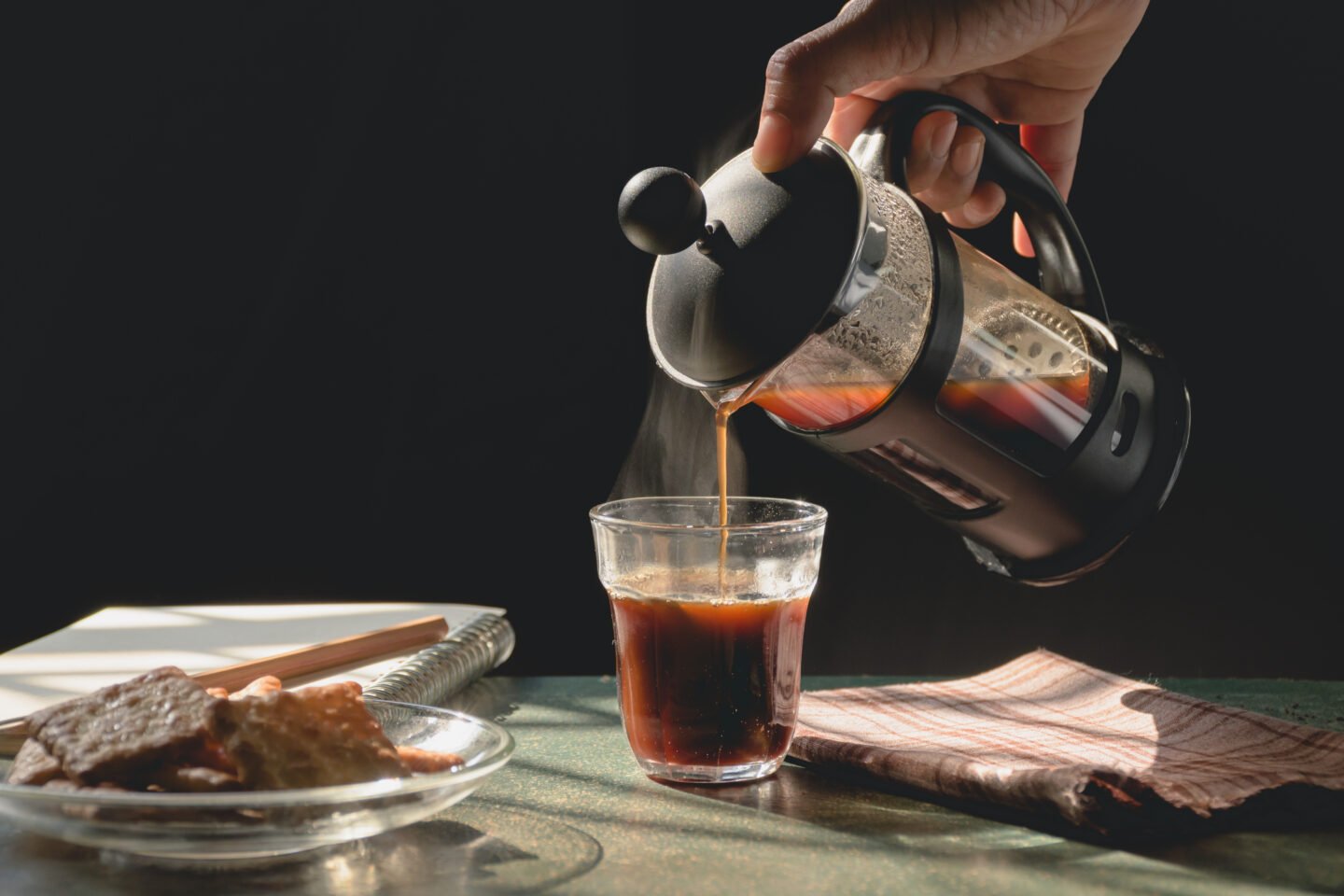
A French press, also known as a coffee press, is a manual coffee-making device that consists of a cylindrical glass or stainless steel pot with a plunger and a metal or nylon mesh filter.
It’s a personal favorite of mine for the convenience and quickness of brewing. French press coffee is also pretty forgivable. That means that it’s hard to brew a bad cup of coffee in a French press.
French press coffee is known for its rich, full-bodied flavor and strong aroma. It tastes similar to drip coffee.
It is a popular choice for coffee lovers who appreciate the simplicity and control of their brewing method.
I love the ability to quickly change the variables in a French press to achieve a new brew. That’s the best part.
If you have only ever used a coffee maker before, I’d recommend starting your home brewing journey with a French press.
The French press is an excellent introduction to home brewing, and the ease of brewing makes it a great choice for beginners.
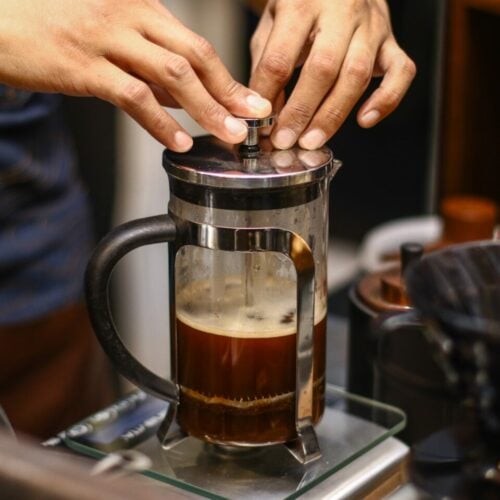
A Quick French Press Recipe
Equipment
- French Press
Ingredients
- 30 grams of coarse-ground coffee
- 500 grams of water
Instructions
- Heat the water to just below boiling (around 200°F). This is important. Too hot and you’ll burn the coffee; too cold and you won’t get good flavors. The rule of thumb is to boil and then wait 15-30 seconds.
- Add the coffee beans to the French press pot.
- Pour the hot water over the beans and stir gently. Only stir enough to break the crust that forms at the top of the coffee.
- Let the coffee steep for 4-6 minutes, depending on the desired strength. I recommend about 5 minutes. But use a timer, to be exact!
- Press down on the plunger to separate the grounds from the brewed coffee. Press consistently and slowly.
- Pour the brewed coffee into a mug or carafe and enjoy. Keep in mind that there will be particles at the bottom of your cup. That is perfectly normal.
Notes
My French Press Recommendations
This section will give you two options for great French press brewers.
Ovente French Press
This is a great French press for a beginner.
The plastic is durable and won’t shatter if you drop it. (I’ve gone through so many glass French presses in my time.)
It’s also small enough for a single cup at a time.
I recommend it to someone looking for a great beginner’s French press. The brew quality is the same as more expensive brewers but without commitment.
Stanley 48oz French Press
If you know your brands, you’ll recognize the Stanley name.
And yeah, it’s the same Stanley. Didn’t see that one coming, did you?
Stanley produces some of the most durable and high-quality kitchenware on the market. If my whole kitchen and adventure gear could be Stanley, it would be.
Why this French press? Because it’s insulated, durable, and big enough to share.
I recommend this to someone who likes a lot of coffee or wants to brew while camping.
It’s a great all-around option, even for seasoned baristas.
What Is A Pour Over?
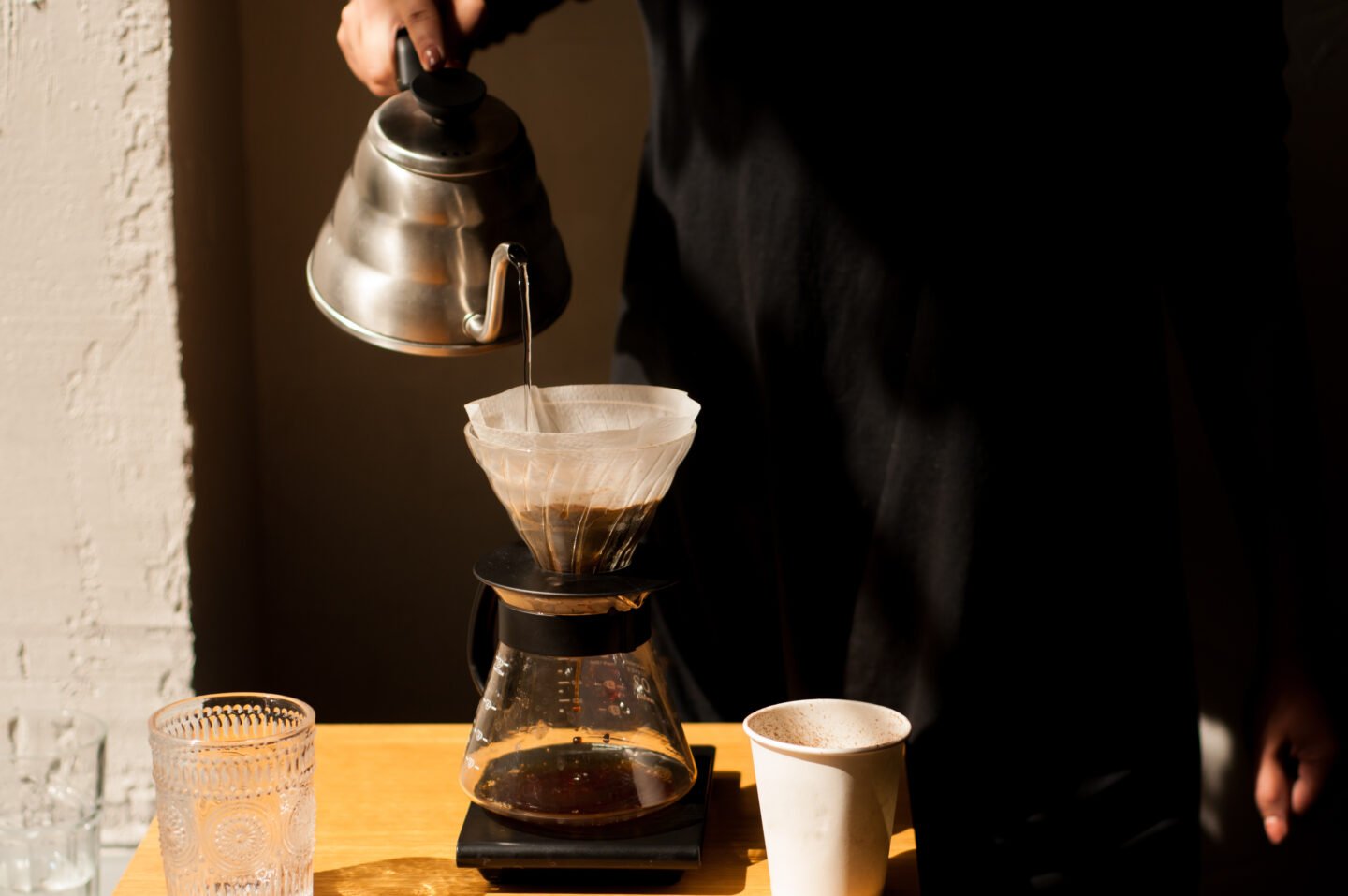
A pour-over coffee is a brewing method in which hot water is poured over ground coffee beans, which are contained in a filter, and the brewed coffee is collected in a carafe or mug.
There’s no beating around the bush here: pour-over coffees are pretty involved. In order to make a great cup of coffee, you’ll need a lot of equipment.
Here’s a list of equipment you’d need for a good pour-over:
- Scale
- Kettle (preferably an electric gooseneck)
- Pour-over brewer and corresponding filters
- Grinder
- Carafe
- Timer
- Spoon
Keep in mind that the brewer and the kettle will run you a handful of French presses in cash. But on the other hand, you need good equipment to really make great pour-over coffee.
But the good news is that you can produce some of the best coffee you’ll ever drink with a pour-over.
Pour-over coffee is known for its clean, bright flavor and complex aroma.
It requires more skill and attention than other brewing methods, as the pour and extraction rate can significantly affect the final product.
However, many coffee lovers enjoy the control and precision of the pour-over method.
It’s best for someone who wants to get into the science and precision required to brew great coffee.
Types Of Pour Overs
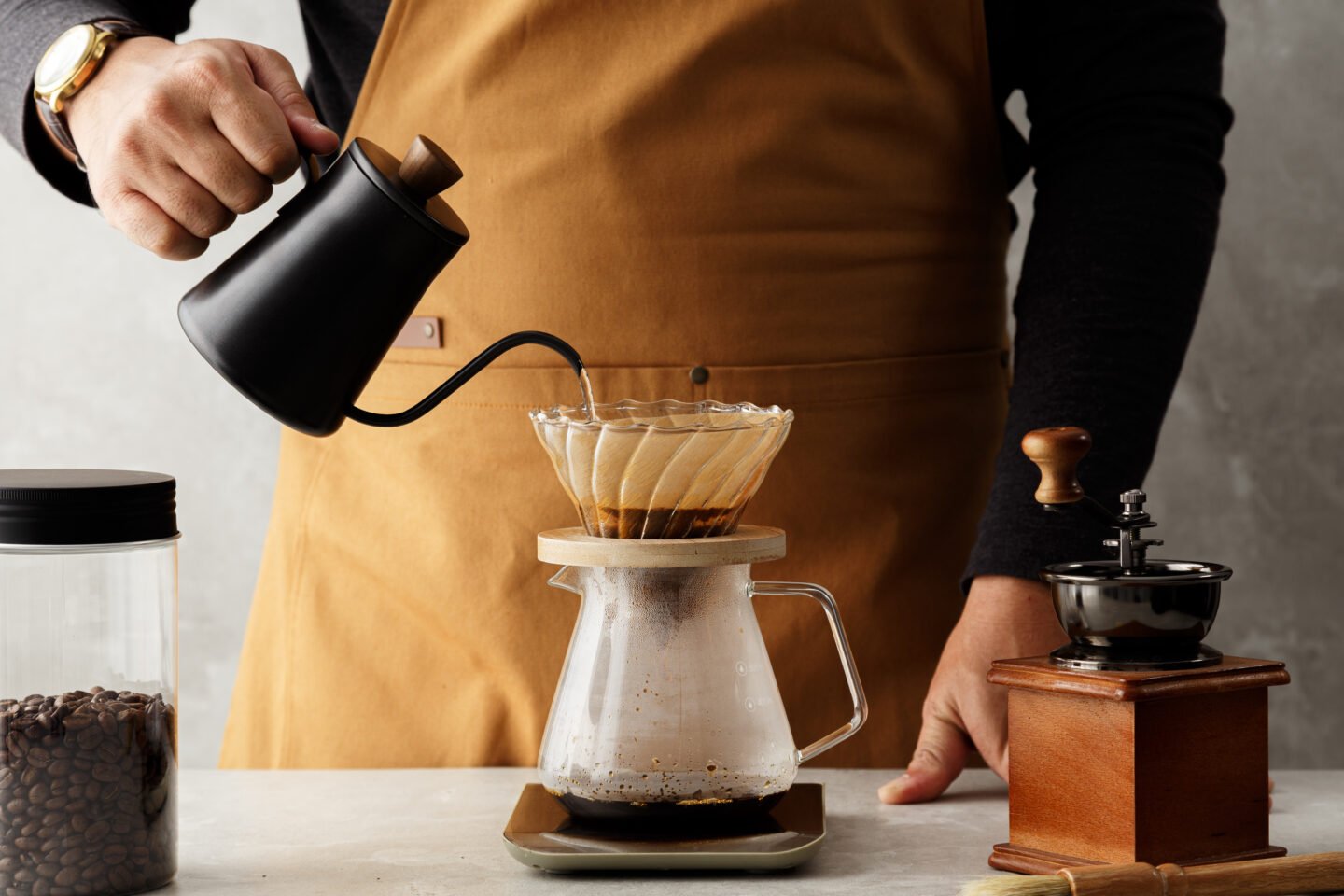
The other thing I need to mention is the sheer number of pour-over brewers out there.
There are so many pour-overs out there that I can’t possibly mention all of them.
The V60 is nearly the gold standard for pour-over brewers. It has a simple design and has been around for a long time.
A Clever Dripper is another great way to brew pour-overs.
For beginners, I recommend a multi-hole pour-over like the Melitta cone or the Kalitta Wave brewers.
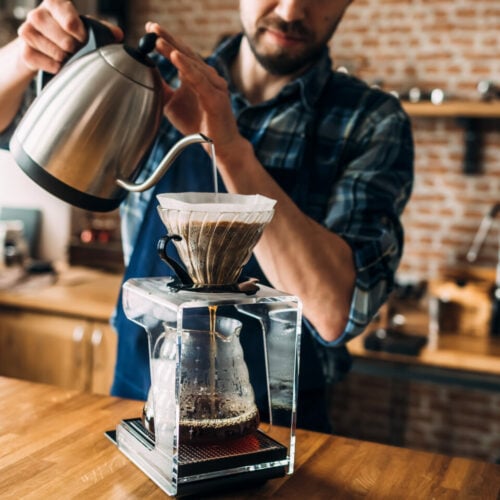
Quick Pour Over Recipe
Equipment
- Pour over brewer
Ingredients
- 22 grams of finely-ground coffee
- 352 grams of hot water
Instructions
- Heat the water to just below boiling (around 200°F). Again, don’t brew right off the boil; wait until the water cools just a bit.
- Place the filter in the pour-over cone and add the coffee beans. It’s best to get the filter a little bit wet before you add the beans.
- Slowly pour the hot water over the beans in a circular motion, starting from the center and working outward.
- Allow the coffee to drip through the filter and into the carafe or mug.
- Once all the water has been poured, remove the filter and discard the grounds.
- Pour the brewed coffee into a mug or carafe and enjoy.
Notes
- Start a timer when you start pouring the water. Aim to get all your water into the brewer by 1:30.
- Aim for all the water to finish running through the grounds at around 3 minutes.
- Pour about 50 grams of water over the coffee. Then stop and use a small spoon to break up the crust that forms. Then pour the rest of the water. Once all the water is poured, pick up the brewer and give it three swirls to wash the sides of the coffee grounds.
My Pour-Over Recommendations
Let me walk you through two of my favorite pour-over brewers and explain who might benefit from each one.
Melitta Porcelain #2 Cone Brewers
I used the Melitta Cone daily for three years because it was the cheapest pour-over option, and I wanted to learn everything I could about great coffee.
And trust me when I say it held up to all the abuse.
For brew after brew, the Melitta Cone was a great companion. It’s what started me on my journey into specialty coffee, and I actually still use it sometimes when I’m nostalgic.
That’s why I recommend it to beginners. As far as pour-overs go, the Melitta Cone is pretty forgivable and easy to use.
Hario V60 Pour-Over Set
The Hario V60 is perhaps the gold standard of pour-over brewing.
It creates some of the best cups of coffee ever brewed and has the potential to break your understanding of coffee.
But that comes at a cost—both for your wallet and your time.
It takes a lot to brew really good coffee in the V60, and that’s why I only recommend it to someone who knows their way around a pour-over brewer or someone who wants to learn.
I wouldn’t recommend it as a first brewer.
The Differences Between French Press Vs. Pour Over
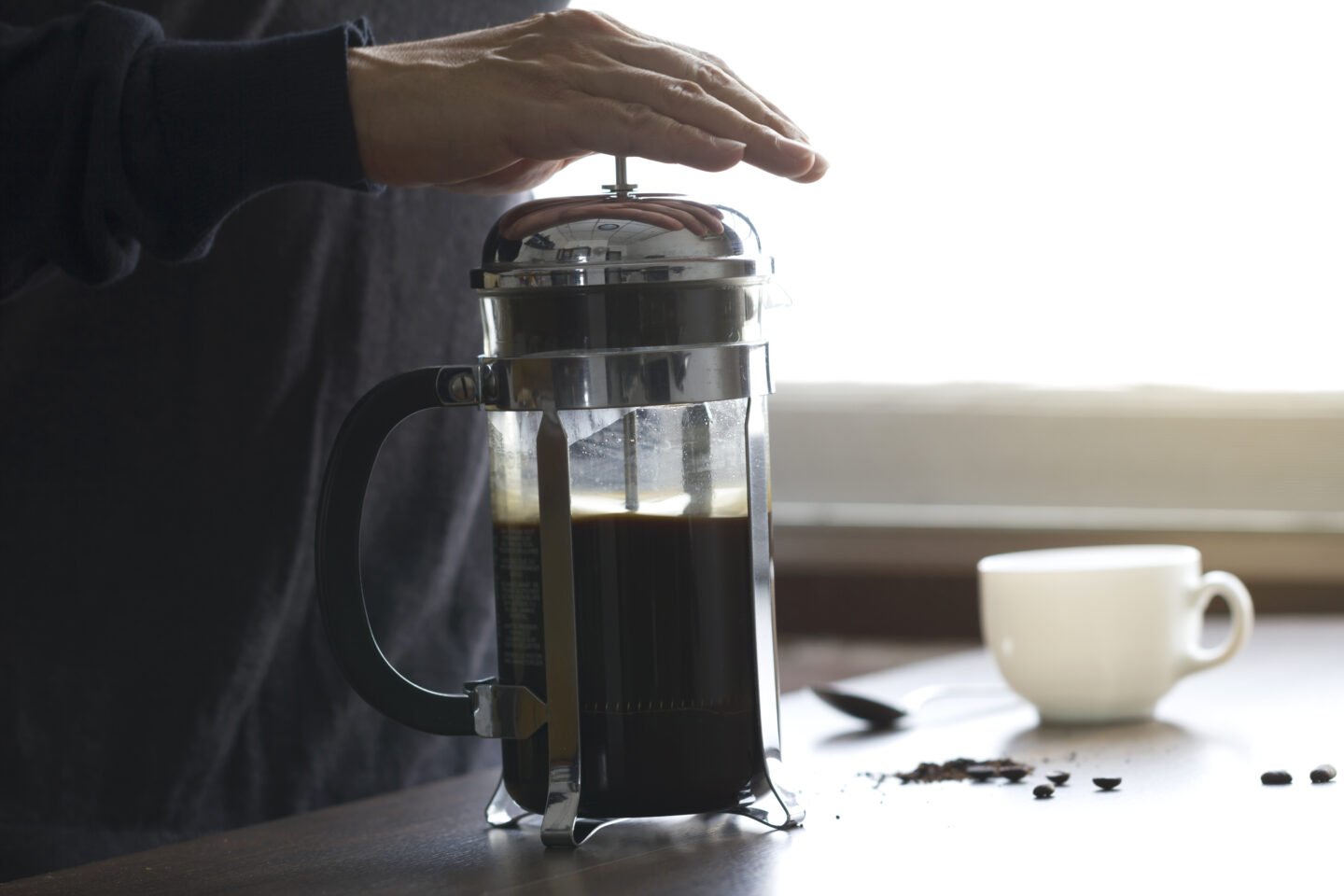
French press coffee is made by steeping coarsely ground coffee beans in hot water for a set period of time, while pour-over coffee is made by slowly pouring hot water over finely ground coffee beans in a filter, resulting in a cleaner and brighter flavor.
But let’s dive into some of the actual differences between the two brewing styles.
Equipment
A French press consists of a cylindrical glass or stainless steel pot with a plunger and a metal or nylon mesh filter.
A pour-over setup consists of a ceramic or glass cone with a filter and a separate kettle or pot for boiling water.
Brewing
You'll need coarsely ground coffee beans and hot water to use a French press. Add the coffee and water to the pot, stir, and let it steep for several minutes. Then, push down on the plunger to separate the grounds from the brewed coffee.
With a pour-over, you'll need a finer coffee grind and a kettle or pot to heat the water. You'll pour the hot water over the grounds in a circular motion, allowing the coffee to drip through the filter into a carafe or mug.
Flavor and Strength
French press coffee tends to be stronger and fuller-bodied than pour-over coffee due to the longer steeping time and the fact that the grounds remain in contact with the water for the entire brewing process.
Pour-over coffee tends to be cleaner and brighter in flavor, as the water only comes into contact with the grounds for a short period.
Time and Effort
A French press is generally easier to use than a pour-over, requiring less precision and attention.
A pour-over requires more skill and attention to achieve the desired flavor and strength, as the pour and extraction rate can significantly affect the final product.
My Final Thoughts On French Press Vs. Pour-Over
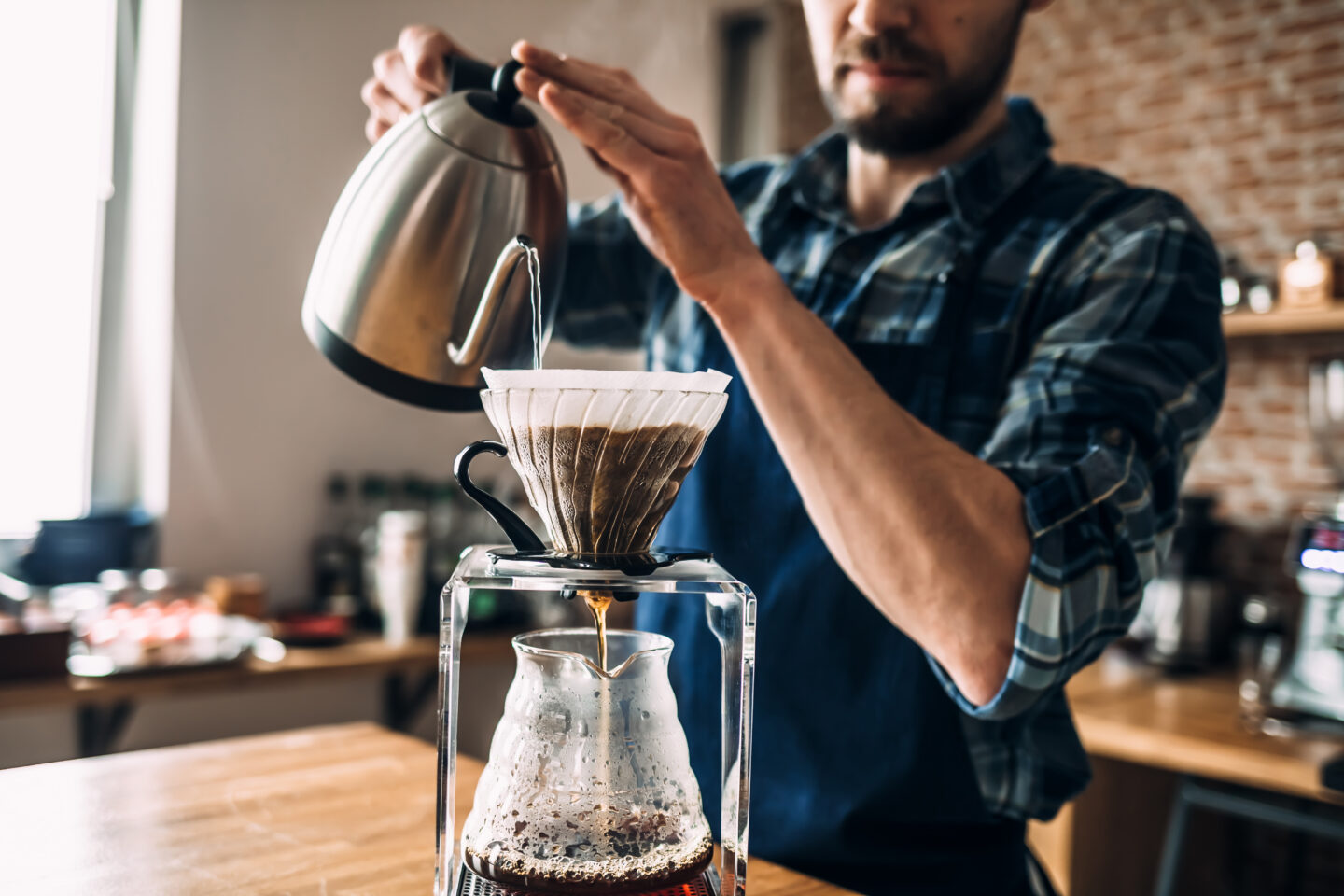
A French press is a simple, elegant, and easy way to make coffee. It’s just a carafe, coffee beans, hot water, and a plunger.
A pour-over coffee is more involved.
But think of it like this: a French press is reliable, and you’ll get a decent cup of coffee almost no matter how you brew.
A pour-over is much harder and requires a lot more effort. But you can brew some of the best coffee you’ll ever drink.
If you’re just starting your coffee journey: learn to use a French press first.
If you’re a dedicated home brewer, go ahead and start your pour-over odyssey.





Leave a Reply